“Este tren cubano” (es/en)
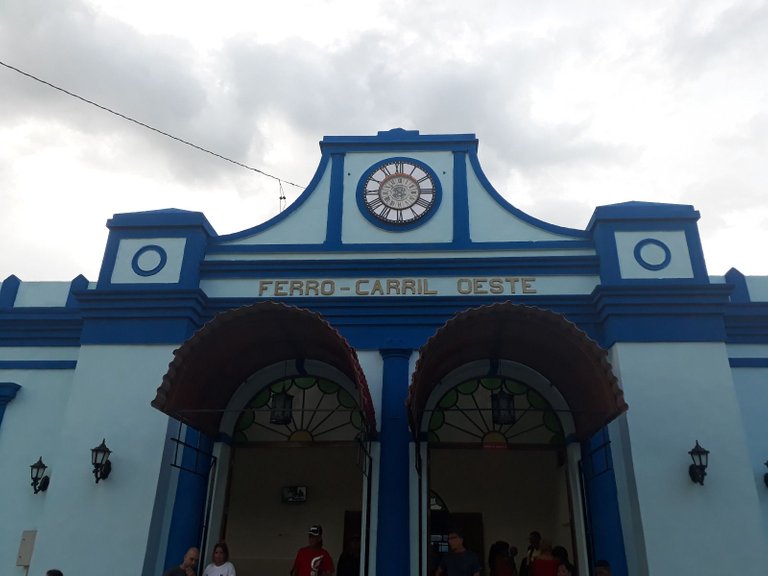
Hola, amiga o amigo de Hive. ¡Qué gusto tener esta plataforma para exponer nuestras vivencias, compartir experiencias y apoyarnos desde el afecto! Hoy quiero escribirte sobre un medio de transporte que ha marcado la vida de muchas personas en el mundo: el ferrocarril. Cuando uno es pequeño, por lo general siempre juega a los carritos y hace toda una obra de ingeniería con piedras, palos y tierra en el patio de la casa. ¡Eso me fascinaba! Yo no sé por qué ese tiempo tiene que pasar tan rápido.
Los primos míos y yo jugábamos a los carros, pero yo quería ponerle algo más: un tren. Siempre quise tener uno de juguete, pero en #Cuba vivíamos un férreo período especial y el dinero no podía cogerse para comprar juguetes, pero a mí no me importaba porque había que ser creativo: usé unas cuñas de madera rectangulares, las coloreé y ahí tenía yo mi tren. Lo que no puedas imaginar, no puede suceder.
ENGLISH VERSION (click here!)
Hello, friend of Hive, what a pleasure to have this platform to expose our experiences, share experiences and support each other with affection! Today I want to write to you about a means of transportation that has marked the lives of many people in the world: the railroad. When you were a child, you always played with trolleys and made a whole engineering work with stones, sticks and earth in the backyard of your house. That fascinated me! I don't know why that time has to go by so fast.
My cousins and I played with cars, but I wanted to put something else on it: a train. I always wanted to have a toy one, but in #Cuba we were living a special period and money couldn't be taken to buy toys, but I didn't care because I had to be creative: I used some rectangular wooden wedges, I colored them and there I had my train. What you can't imagine, can't happen.
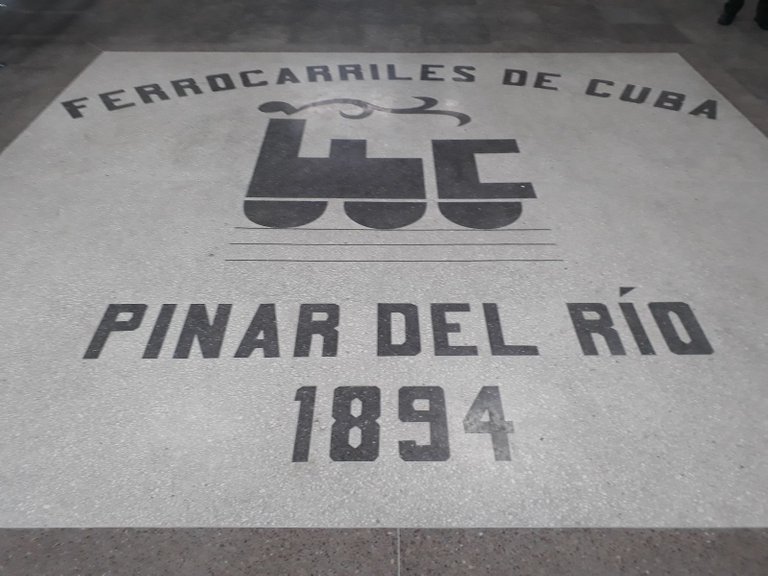
Esa pasión mía por los trenes estaba dada porque mi familia paterna es de un lugar situado entre los municipios Pinar del Río y San Luis y al lugar se accede, principalmente por tren. Me debería dar pena expresar que me motivaba más ir por montar el tren que por estar allá. Recuerdo que cuando me traían del campo a la ciudad, había que madrugar para caminar como 5 kilómetros hasta el paradero del tren, en este caso “Pedregal”, que es como se nombra mi parada. Todo era silencio, grillos, algunos carros pasando esporádicamente hasta que a lo lejos, lo primero que se veía, era una luz brillante e intensa.
El sonido se iba haciendo y la luz agrandándose a medida que se acercaba. Ahí ya todos se ponían en el pequeño andén a esperar a que llegara la mole de hierro con sus casillas rumanas incipientemente alumbradas en su interior, llenas de personas que venían a trabajar, pasear, estudiar a la ciudad. Me generaba mucha emoción sentir como los rieles comenzaban a vibrar. Mi locomotora preferida, porque era la que más predominaba en la provincia era la TEM-4, de color rojo con una banderola amarilla que en sus lados frontales bajaban en triángulo, rodeando su amplia luz central. Ya no he visto más de estas en Pinar.
ENGLISH VERSION (click here!)
That passion of mine for trains was given because my paternal family is from a place located between the municipalities of Pinar del Río and San Luis and the place is accessed mainly by train. I should be ashamed to say that I was more motivated to go there to ride the train than to be there. I remember that when I was brought from the countryside to the city, I had to get up early to walk about 5 kilometers to the train stop, in this case "Pedregal", which is the name of my stop. Everything was silence, crickets, some cars passing sporadically until, in the distance, the first thing you could see was a bright and intense light.
The sound was getting louder and the light was getting bigger as it got closer. There everyone was already standing on the small platform waiting for the arrival of the iron mass with its Romanian boxes incipiently illuminated inside, full of people who came to work, to walk, to study in the city. I was very excited to feel how the rails began to vibrate. My favorite locomotive, because it was the most predominant in the province, was the TEM-4, red with a yellow banner that on its front sides went down in a triangle, surrounding its wide central light. I have not seen any more of these in Pinar.
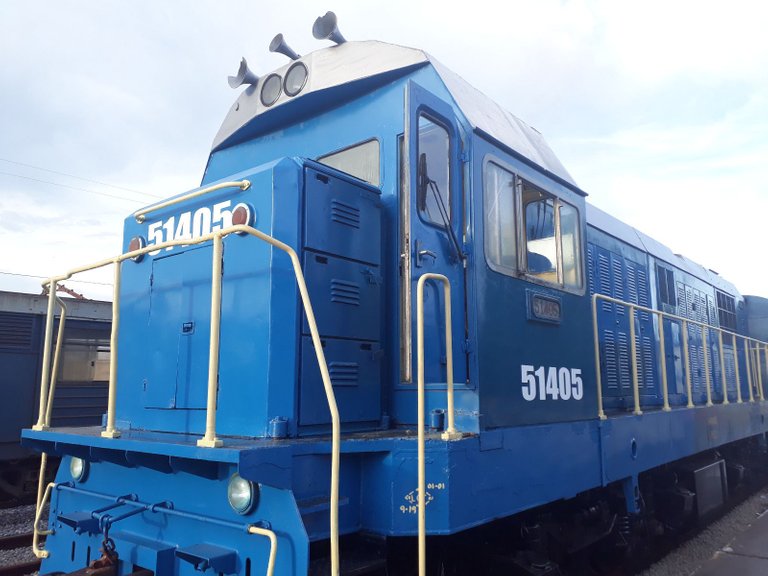
Si hacemos un poco de historia, el ferrocarril llegó a #Cuba en 1837, cuando era territorio español. Todavía resulta increíble que fuera la primera línea férrea de Hispanoamérica y la primera “española”. Hoy el atraso es abismal, pues quedó detenida en el tiempo. La isla grande del Caribe en el siglo XIX producía la mejor caña de azúcar y este tipo de transporte facilitaba la zafra. Me encantaba de niño que la televisión cubana transmitiera unos animados producidos por el ICAIC, donde reflejaba el sufrimiento humano en las primeras traviesas del camino de hierro.
Yo resido al oeste #cubano, pero la arquitectura de las terminales, su estilo y colores, datan de siglos anteriores. El ferrocarril cubano se caracteriza por ser avejentado, con vagones que ya no son los que tienen el confort necesario, aunque “resuelven”, como alegan algunos compatriotas. Aunque Cuba tiene ya locomotoras chinas y vagones con mejor confort para el traslado de personas entre sus provincias, a Pinar del Río no ha llegado.
ENGLISH VERSION (click here!)
If we do a little history, the railroad arrived in #Cuba in 1837, when it was Spanish territory. It is still incredible that it was the first railroad line in Latin America and the first "Spanish" one. Today the delay is abysmal, because it was stopped in time. The big Caribbean island in the 19th century produced the best sugar cane and this type of transportation facilitated the sugar cane harvest. When I was a child, I used to love it when Cuban television aired cartoons produced by the ICAIC, reflecting the human suffering on the first sleepers of the iron road.
I live in western #Cuba, but the architecture of the terminals, their style and colors, date back centuries. The Cuban railroad is characterized by being old-fashioned, with cars that are no longer those that have the necessary comfort, although they "resolve", as some compatriots allege. Although Cuba already has Chinese locomotives and cars with better comfort for the transportation of people between its provinces, it has not reached Pinar del Río.
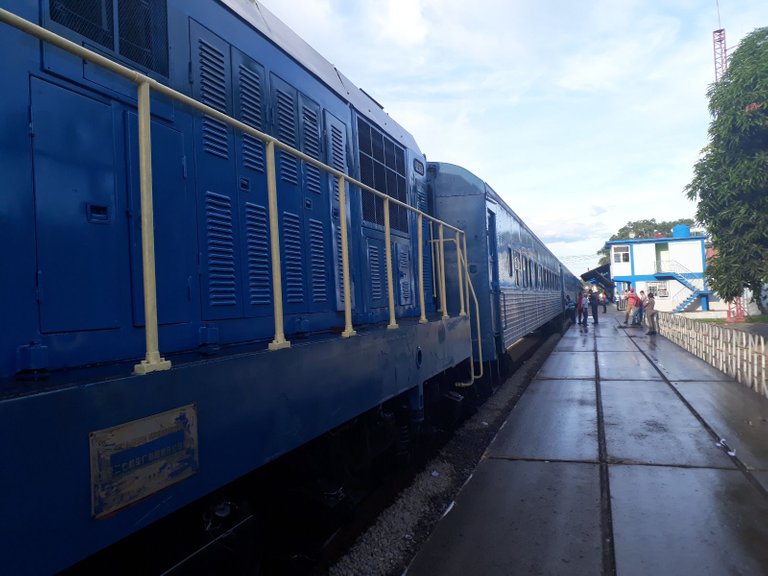
Las imágenes que seleccioné para este post, las tomé en el año 2019 cuando se volvía a rescatar el tren “Pinareño”, como le llamaban, gracias a que Cuba renovaba su ferrocarril para el centro y el oriente y los coches que estaban en ese servicio los donaron a esta parte del país. Aun así, fueron remodelados, pintados y puestos en servicio. (Hoy volvió a detenerse el servicio). Disfruté mucho ese viaje con mi mamá, pero solo íbamos hasta el municipio Los Palacios, donde reside mi tía.
El tren no tenía muchos pasajeros, pues era el primer día en que se reinauguraba la terminal de trenes y salía el “Habanero”, como también se le conoce a la formación. Han pasado los años, fui a España, monté un AVE de RENFE, súper desarrollados, pero me faltó sentir cómo mis órganos se movían y mi nariz respiraba el olor a hierro quemado por la frotación de las ruedas con los rieles. Esa experiencia es solo para el ferrocarril cubano. ¿Y a ti, te gusta montar en tren? Charlemos un poco en los comentarios. Gracias por leer hasta aquí.
Las imágenes utilizadas en la publicación fueron tomadas con mi móvil Samsung Galaxy J7 Prime.Textos llevados al Inglés por Deepl Traslate.
ENGLISH VERSION (click here!)
The images I selected for this post were taken in 2019 when the "Pinareño" train, as it was called, was rescued again, thanks to the fact that Cuba was renovating its railroad for the center and east and the cars that were in that service were donated to this part of the country. Even so, they were remodeled, painted and put into service (today the service stopped again). I really enjoyed that trip with my mother, but we only went as far as the municipality of Los Palacios, where my aunt lives.
The train did not have many passengers, because it was the first day that the train terminal was reopened and the "Habanero", as the train is also known, was leaving. Years have passed, I went to Spain, I rode a RENFE AVE, super developed, but I missed feeling how my organs moved and my nose breathed the smell of burnt iron by the rubbing of the wheels with the rails. That experience is only for the Cuban railroad. And you, do you like to ride a train? Let's chat a bit in the comments. Thanks for reading this far.
The images used in the publication were taken with my Samsung Galaxy J7 Prime cell phone.Texts translated into English by Deepl Translate.
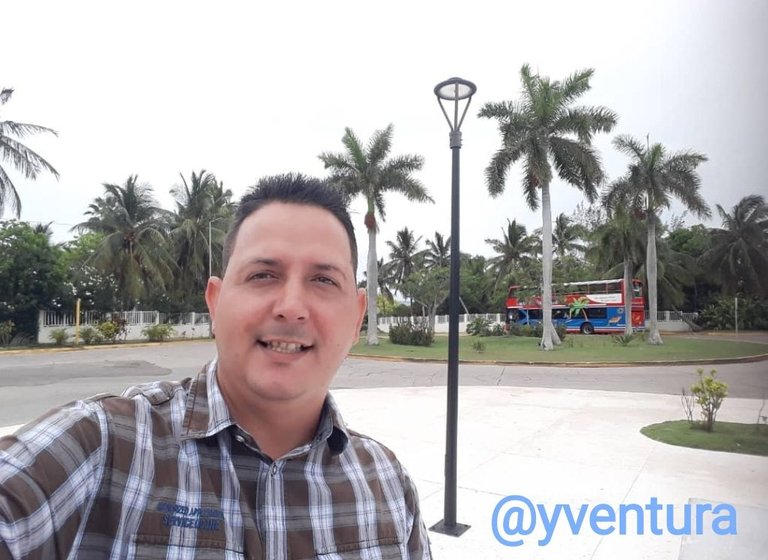

Congratulations @yventura! You have completed the following achievement on the Hive blockchain And have been rewarded with New badge(s)
Your next target is to reach 500 replies.
You can view your badges on your board and compare yourself to others in the Ranking
If you no longer want to receive notifications, reply to this comment with the word
STOPCheck out our last posts:
Thanks
You're welcome @yventura! Have a nice day 😊👍
Romanian boxes? 😲 I'm from Romania.
Hello! I am referring to freight wagons made in Romania, but windows were added in Cuba and were used for the transport of goods. Thank you for reading and commenting. A strong hug.
A todos de niños nos atrajo ese monstruo de acero, en mi caso hacía una carrilera de carritos con ruedas de latas de puré o leche condensada que Metian más ruido que el tren de cargas.Para tener que recorrer 5 kms para tomar el tren en Pedregal, deduzco que vivías por EL MILLON o serca de Rio Séquito, yo vivía en Barbacoa.
Hola, mi amigo, ansioso estoy por conocerte. Te nombras igual que mi padre. Viví más allá de una localidad llamada Loma del Ganso, camino a San Luis. Interesante lo que me cuentas. Un abrazo fuerte.
Me has transportado a esos viajes a San Luis que hacía cuando niño con mi papá para ver a la familia que allí vivía, me encantaba cuando el tren se metía dentro de un espacio cerrado donde todo se ponía oscuro y el ruido era enorme, tal parecía una atracción de algún parque de diversiones al menos para un niño.
Conozco el lugar, queda entre el Vizcaíno y Pedregal, justo antes de llegar a los almacenes de CUPET. Un ruido ensordecedor, por cierto. Muchas gracias por llegarte al post, por identificarte con él.
Ah cuánta emoción, creo que ya mi afecto por el tren lo he ido expresando en algunos de mis post. Me faltó agradecerle a ese transporte por su contribución a mí formación profesional pues durante cinco años me llevó hasta la universidad en la mañana y me devolvía a mi casa. A pesar del tumulto de personas, los olores distintos, las demoras por diferentes motivos, viaje en tren siempre fue una agradable aventura. Gracias por compartir.
Coincido, amiga mía, incluso, me alegré mucho un día en que me enviaste unas fotografías mientras tomabas el tren. Gracias mil.
buen post, es bueno encontrarse con coterráneos por la plataforma.
Un gustazo también por acá. Gracias por el comentario.
Imagino que este constituya uno de tus post favoritos, por lo mucho que te apasiona el tema. Si no fueras radialista y docente, seguro el ferrocarril cubano tuviera en sus filas un gran maquinista.
Jajajajajaja, qué clase comentario más agradable. Tienes razón, aunque no lo escribí, de niño deseé ser motorman o hasta manejar un bus. Ya luego el deseo fue perdiéndose.
El deseo sigue en ti, pero latente.
El tren siempre ha sido un medio de transporte muy usado desde hace mucho tiempo, yo también lo he montado varias veces desde pequeña pues viajaba con mi papá en el. Te quedó muy bonito el post. Por lo menos a mí me trae muchos recuerdos sobre todo de infancia. Saludos y feliz día.
Muchas gracias, amiga, por tus palabras. Es emotivo que te identifiques con el post y te remonte a tu infancia. Un abrazo grande.
Así es, recordar es volver a vivir y porsupuesto, los recuerdos siempre son bienvenidos. saludos y feliz día.
Hermano comparto la idea que nos deseas transmitir. Es única la sensación que describes de sentir los órganos sueltos dentro de ti cuerpo con el movimiento del tren😂😂 y ese olor a herrumbre... No he montado más ninguno pero q es parte de nuestra idiosincrasia.
Jajaja estaba esperando tu visita al post. Al fin pasaste.
Qué lindo post, me hizo recordar mis aventuras de la infancia, el tren era y sigue siendo mágico. Al ser espirituana me tocó ir a La Habana en "El Lechero", cariñoso nombre por la cantidad de paradas que hacía y por la leche y el queso que se transportaba hacia La Habana. Ya como profesora de la UCLV (en Santa Clara) lo que más me gustaba era coger el tren universitario cada día para ir a trabajar, me sentía en el Expreso de Hogwarts...
Qué lindo comentario. A este le llamamos el lechero igual. Pensaba yo antes que era por el tipo de coches y luego por las paradas. jjjjj, muchas gracias.
We had a brilliant train system here in South Africa, sadly dismantled and destroyed over the last thirty years, what poor foresight not looking after such a gem to move people and cargo.
Smell of trains so unique, travel took three days and two nights on most longer journeys, I miss the days of hopping on board a train and getting from A to B, whether a long or short journey, it is sorely missed!
@tipu curate
Upvoted 👌 (Mana: 55/75) Liquid rewards.
Appreciate a lot of your reading and which me escribes. interesting. Many thanks.
Have a wonderful weekend, when next you catch a train think of those who long to enjoy this as normal public transport once again.
Thank you very much for your comment. Really, enjoying this means of transport, as in few cases, is always an unforgettable experience.
Have a wonderful weekend, hope you get a train ride soon.
!PIZZA
Hablar de trenes es hablar de nostalgia. Recuerdo que siempre mi papá me traía de La Habana en el tren de la noche y llegábamos a Pinar a las 8 de la mañana. Ese olor característico es verdad que hasta se extraña. Era un viaje largo, pero era muy entretenido ir viendo los pueblos por las ventanas. Gracias por este post que me trajo bonitos recuerdos 🙏😊
Gracias, @wendy23, por tu visita al post, por el apoyo de siempre y por contarnos tu experiencia.
Un placer amigo 👍
Oka yventura .no escapó de comentar y no es porque tenga que estar en la seguidilla, pero presisamente todo ese periodo especial uuuf ,que nombrecito! Viví cerca de la línea del tren ,y ese era prácticamente mi vía de transportación. Mira , ya cuando pata de hierro ,como le decíamos llegaba al paradero de Medina había que subir, no ,subir no, trepar a como podía por entre vagones. Y aveces quedarte ahí a orcajadas hasta ir mejorando .
Un día fue tanta la carga que antes de llegar a Maximino el tren dijo clarito* no puedo más , debió de darle una fatiga .las ruedas se pegaron al coche.
Ahora ,si te digo una cosa , había una solidaridad ferroviaria my grande por lo menos entre los pasajeros.
Verdad que cuando llegabas a Pinar tenías que estirarte para quitarte los calambres jjaa.
Buen post ,
saludos
Qué experiencia tan interesante, mi amigo. Me gusta mucho el tren.
$PIZZA slices delivered:
@joanstewart(1/10) tipped @yventura
Saludos yventura. Me emocionó mucho tu post. Me recuerda mucho mi etapa universitaria en que dependía no solo del llamado tren lechero, sino también del especial. Es posible que este último no lo recuerdes pero guardo recuerdos muy profundos sobre el. Tambien una parte de mi vida estuvo ligada a los trenes
Así es, mi estimado amigo y profesor. Me alegra que le haya gustado el post y que haya comentado. Un abrazo fuerte.